 | TODAY IN SCIENCE HISTORY NEWSLETTER - 18 FEBRUARY |
| Feature for Today |
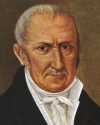 On 18 Feb 1745, Alessandro Volta was born. He's important enough in the history of science to be in just about every physics textbook! Before starting on his Nobel Prize-winning Oil-Drop experiment, Robert Millikan, as many professors have, co-authored a textbook of physics. On 18 Feb 1745, Alessandro Volta was born. He's important enough in the history of science to be in just about every physics textbook! Before starting on his Nobel Prize-winning Oil-Drop experiment, Robert Millikan, as many professors have, co-authored a textbook of physics. A novel feature of his book is that each full-page picture of historic scientists - including the picture of Alessandro Volta - had an interesting border, in which the decoration was tiny diagrams of classic student experiments. Sadly, the book gives no key to these diagrams. So today's feature is a challenge. Look at the illustration and see how many of these you can recognize! See how many you can figure out. Some are easier than others. Then use the email Reply, or website Feedback, to send your ideas the the Webmaster. (Or the ideas of the students in your science class if you teach.) Go ahead. Have fun! Or, you might be interested to look at this picture of the monument to Volta unveiled (about a half-century after his death) at Pavia in 1878 as a memorial to his work. |
| Book of the Day | ||
|
| Quotations for Today | |
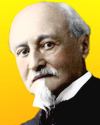 | Let us hope that the advent of a successful flying machine, now only dimly foreseen and nevertheless thought to be possible, will bring nothing but good into the world; that it shall abridge distance, make all parts of the globe accessible, bring men into closer relation with each other, advance civilization, and hasten the promised era in which there shall be nothing but peace and goodwill among all men. |
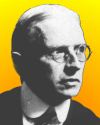 | One of the most striking results of modern investigation has been the way in which several different and quite independent lines of evidence indicate that a very great event occurred about two thousand million years ago. The radio-active evidence for the age of meteorites; and the estimated time for the tidal evolution of the Moon's orbit (though this is much rougher), all agree in their testimony, and, what is far more important, the red-shift in the nebulae indicates that this date is fundamental, not merely in the history of our system, but in that of the material universe as a whole. |
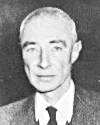 | I am become death, The Shatterer of Worlds. [Quoting from the 2,000-year-old Bhagavad Gita of India at the instant the first test atomic device exploded.] |
| Quiz | |
| Before you look at today's web page, see if you can answer some of these questions about the events that happened on this day. Some of the names are very familiar. Others will likely stump you. Tickle your curiosity with these questions, then check your answers on today's web page. | |
| Births | |
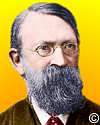 | An Austrian physicist, born 18 Feb 1838, established important principles of optics, mechanics, and wave dynamics. He introduced a number, still named for him, for the ratio of speed of object to speed of sound. Can you name this scientist? Can you name this scientist? |
 | Count Alessandro Giuseppe Antonio Anastasio Volta, born 18 Feb 1745, was an Italian physicist whose invention of the electric battery (1800) provided the first source of continuous, reliable current produced by the contact of two dissimilar metals. His famous voltaic pile consisted of an alternating column of disks of silver and another metal separated by porous cardboard soaked in brine. What was the second metal he used in his voltaic pile? What was the second metal he used in his voltaic pile? |
| Deaths | |
 | J. Robert Oppenheimer (1904-1967) was a U.S. theoretical physicist and science administrator, noted as a laboratory director during development of the atomic bomb (1943-45). What laboratory did he direct (1943-45)? What laboratory did he direct (1943-45)? |
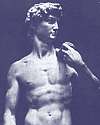 | On 18 Feb 1564, a certain Italian renaissance artist died, whose family name is “di Lodovico Buonarroti Simoni.” He advanced science by performing a number of dissections and prepared extremely accurate anatomical drawings of the human body. He was also an architect. By what name is this artist generally known? By what name is this artist generally known? |
| Events | |
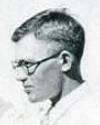 | On 18 Feb of a certain year, the planet Pluto was discovered by Clyde Tombaugh, the only planet to be found by an American astronomer. (Well, it WAS a planet when it was discovered!) In which decade was Pluto discovered? In which decade was Pluto discovered? |
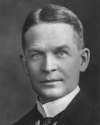 | On 18 Feb 1913, chemist Frederick Soddy introduced a new term. He suggested that different elements produced in different radioactive transformations were capable of occupying the same place on the Periodic Table, and named such species from Greek words meaning “same place.” What is this term? What is this term? |
| Answers |
| When you have your answers ready to all the questions above, you'll find all the information to check them, and more, on the February 18 web page of Today in Science History. Or, try this link first for just the brief answers. Fast answers for the previous newsletter for February 17: the halftone screen that would convert a photograph into a pattern of tiny dots • stethoscope • Remington • decade including the year 1938 • Dmitri Mendeleev. |
| Feedback |
 If you enjoy this newsletter, the website, or wish to offer encouragement or ideas, please send feedback by using your mail reader Reply button. If you enjoy this newsletter, the website, or wish to offer encouragement or ideas, please send feedback by using your mail reader Reply button. Your click on a StumbleUpon, Google+ or Facebook social button on the site webpages is also a welcome sign of appreciation. Thank you for using them. |
| Copyright |
| To find citations for quotations go to the corresponding webpage by clicking on the “quotes” balloon icon. Sources for the thumbnails appear on today's webpage with the corresponding item. � This newsletter is copyright 2014 by todayinsci.com. Please respect the Webmaster's wishes and do not put copies online of the Newsletter � or any Today in Science History webpage. (If you already have done so, please remove them. Thank you.) Offline use in education is encouraged such as a printout on a bulletin board, or projected for classroom viewing. Online, descriptive links to our pages are welcomed, as these will provide a reader with the most recent revisions, additions and/or corrections of a webpage. For any other copyright questions, please contact the Webmaster by using your mail reader Reply button. |
--
If you do not want to receive any more newsletters, Unsubscribe
To update your preferences and to unsubscribe visit this link

Δεν υπάρχουν σχόλια:
Δημοσίευση σχολίου